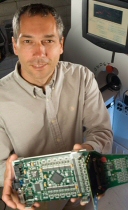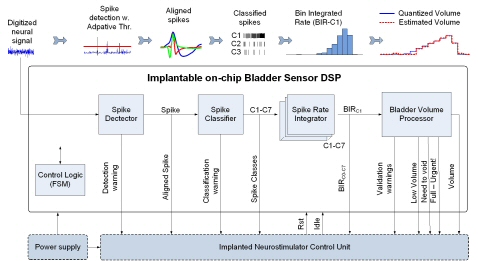FRQNT Strategic cluster grant renewal
On October 28th ReSMiQ filed its application for renewal of the strategic cluster grant to the FRQNT. After carefull evaluation of our application, the FRQNT needed to meet with the leadership of our center and set up visiting committee. The meeting was held on January 29 2015 at the Montréal offices of the FRQNT. Professor Sawan, director of the ReSMiQ, presented our center with the support of colleagues and partners. We wish to thank them for their presence as a show of confidence to the center, its importance and its impact on scientific research in the field of microsystems in Québec. Our warmest thanks to Réjean Fontaine from Université de Sherbrooke, Daniel Massicotte from Université du Québec à Trois-Rivières, Wessam Ajib from Université du Québec à Montréal, Gilles Savard from Polytechnique Montréal, François Verdy-Goyette from the Centre d’innovation en microélectronique du Québec (CIMEQ) and Nicolas Laflamme-Mayer from Dolphin Technologies. The final decision will be known in April 2015. We also thank Marie-Yannick Laplante, Eric Legua, Arnaldo Mendez and André Pettigrew for the sustained effort they provided to help produce an application of quality.
New themes and topics
In order for ReSMiQ’s research program to remain among the most innovative, the Executive Committee periodically updates the research themes and topics. Such a revision was conducted as part of our recent grant application to the FRQNT. Given the expertise and research activities of some members, the committee invited them to take the role of co-chairs for each themes to oversee specific topics, to analyze their relevance and suggest new ones. The management of ReSMiQ like to thank them for their involvement in the center and their precious collaboration. Do not hesitate to send us any comments and relevant information regarding this research program. Here is the list of new themes and topics as well as the researchers who have agreed to co-chair them.
- Theme 1: Microsystems modeling, simulation and design methodologies.
Co-chairs: Claude Thibeault (ETS), Otmane Ait Mohamed (Concordia) - Theme 2: Microsystems implementation and validation
Co-chairs: Réjean Fontaine (USherb), Mounir Boukadoum (UQAM) - Theme 3: Photonics, microfluidics and microelectromechanical systems (MEMS)
Co-chairs: Ricardo Izquierdo (UQAM), Guchuan Zhu (EPM) - Theme 4: Microsystems for biomedical applications
Co-chairs: Mohamad Sawan (EPM), Benoit Gosselin (ULaval) - Theme 5: Microsystems for emerging technologies
Co-chairs: Yvon Savaria (EPM), Jean-François Boland (ETS) - Theme 6: Microsystems for information technology and telecommunications
Co-chairs: Daniel Massicotte (UQTR), Sébastien Roy (USherb)
2015 ReSMiQ’s annual symposium
Once again we will hold our annual symposium during the ACFAS conference, on May 26, 2015. This year the conference will move to Rimouski at the Université du Québec à Rimouski (UQAR). Our program will feature guest speakers as well as our customary scientific poster competition. We are now accepting entries for posters until February 16, 2015. Considering that it will take place far from Montréal we will organize transportation and lodging. More details will be available soon.
NEWS FROM OUR MEMBERS
Exposure
– Dr. Beltrame from Polytechnique Montréal received an ENGAGE grant from NSERC with Pleiade Robotics.
– Dr. Sawan from Polytechnique Montréal offered a tutorial at ICM’14 (Qatar).
More details
– Dr. Massicotte from Université du Québec à Trois-Rivières offered a keynote speech at the Computer Science and Electronic Engineering Conference (CEEC2014).
More details
Achievement
– Dr. Martel from Polytechnique Montréal was bestowed the title of Fellow by the IEEE
More details
– Dr. Sawan and Savaria from Polytechnique Montréal received a STRATEGIC grant from NSERC for “An Integrated Smart Power Harvesting Scheme from High Throughput Data Lines”.
– Dr. Blaquière and Dr. Izquierdo from université du Québec à Montréal, and Dr. Hamoui (posth) from McGill University received the best paper award of the 2013 IEEE Transactions on Components, Packaging and Manufacturing Technology.
– Dr. Miled from Université Laval supervise Adnane Kara (M.Sc.) and Jessy Mathault who received the Brian L. Barge Award for excellence in microsystems integration at the CMC Texpo’14.
Involvment
– Dr. Beltrame from Polytechnique Montréal is the general chair of the NASA/ESA Conference on Adaptive Hardware and Systems (AHS) 2015.
More details
– Dr. Massicotte from Université du Québec à Trois-Rivières organized the 2nd GREI-RIE symposium – Smart City. Over 75 participants were present at this event.
– Dr. Sawan from Polytechnique Montréal is the general co-chair of the International Symposium on Bioelectronics and Bioinformatics (ISBB’15) to be held in Beijing, China, on October 14-17, 2015.
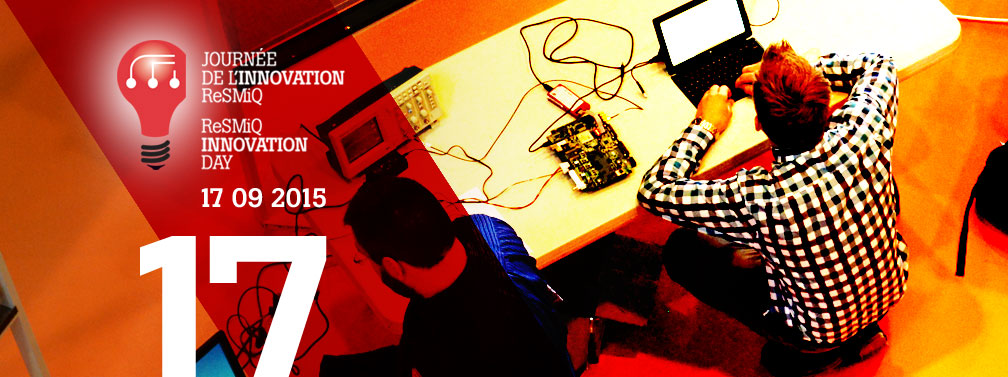
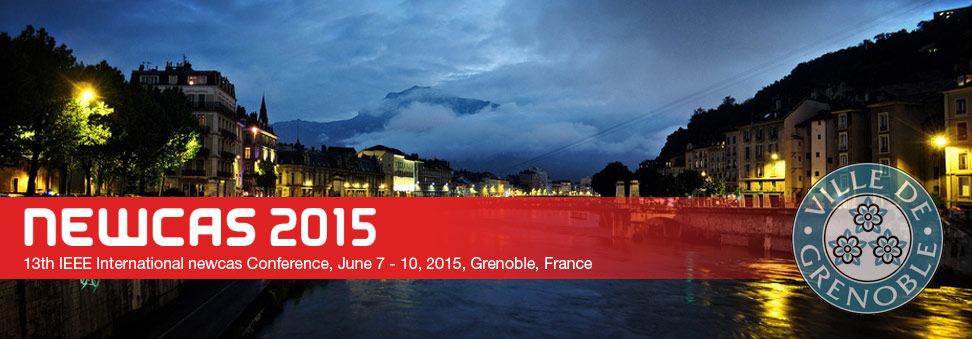
RESMIQ’S ACTIVITIES
Seminars
ReSMiQ in collaboration with the Montréal Chapter of the IEEE Solid State Circuits Society (IEEE-SSCS) and the Montréal chapter of the IEEE Circuits and Systems Society (IEEE-CASS) invites you to attend the following seminar to be held on February 12, 2015, at 10:30 am at Polytechnique Montréal.

Speaker: Philipp Häfliger, Nanoelectronics Group , University of Oslo, Norway
Title: Microelectronics for the Body and for Space: The Nanoelectronics Group at the University of Oslo
Abstract and bio
Financial support and Scholarships
– Financial support for undergraduate students
A financial support of 2000$ for 3 month starting May 1st for undergraduate students supervised by a member of ReSMiQ.
APPLICATION DEADLINE: April 7 2015.
More details
SIGNAL is the main monthly information medium of the Microsystems Strategic Alliance of Québec (ReSMiQ). This newsletter aims to be an active link between the members of ReSMiQ and all individuals who have an interest in research and innovation in microsystems. We commit ourselves to promote in it our members’ research and increase ReSMiQ’s visibility.
ReSMiQ is a group of researchers in an interuniversity research center that can count on the support of the Fonds de recherche du Québec – Nature et technologies (FRQNT) and ten (10) Quebec universities involved in microsystems research.



